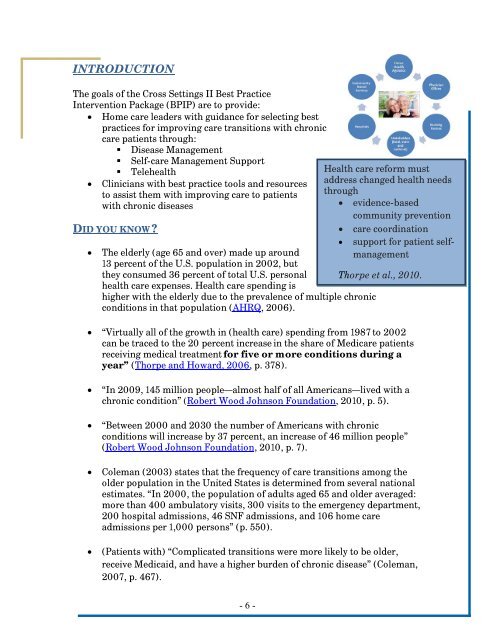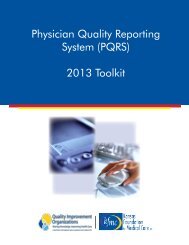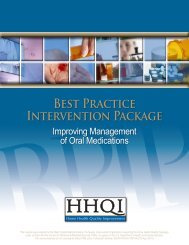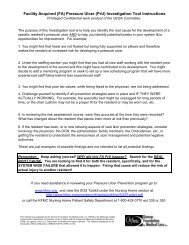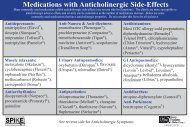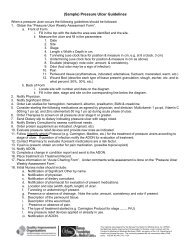Best Practice Intervention Package - Kansas Foundation for Medical ...
Best Practice Intervention Package - Kansas Foundation for Medical ...
Best Practice Intervention Package - Kansas Foundation for Medical ...
- No tags were found...
You also want an ePaper? Increase the reach of your titles
YUMPU automatically turns print PDFs into web optimized ePapers that Google loves.
INTRODUCTIONThe goals of the Cross Settings II <strong>Best</strong> <strong>Practice</strong><strong>Intervention</strong> <strong>Package</strong> (BPIP) are to provide:• Home care leaders with guidance <strong>for</strong> selecting bestpractices <strong>for</strong> improving care transitions with chroniccare patients through:• Disease Management• Self-care Management Support• Telehealth• Clinicians with best practice tools and resourcesto assist them with improving care to patientswith chronic diseasesDID YOU KNOW?• The elderly (age 65 and over) made up around13 percent of the U.S. population in 2002, butthey consumed 36 percent of total U.S. personalhealth care expenses. Health care spending ishigher with the elderly due to the prevalence of multiple chronicconditions in that population (AHRQ, 2006).Health care re<strong>for</strong>m mustaddress changed health needsthrough• evidence-basedcommunity prevention• care coordination• support <strong>for</strong> patient selfmanagementThorpe et al., 2010.• “Virtually all of the growth in (health care) spending from 1987 to 2002can be traced to the 20 percent increase in the share of Medicare patientsreceiving medical treatment <strong>for</strong> five or more conditions during ayear” (Thorpe and Howard, 2006, p. 378).• “In 2009, 145 million people—almost half of all Americans—lived with achronic condition” (Robert Wood Johnson <strong>Foundation</strong>, 2010, p. 5).• “Between 2000 and 2030 the number of Americans with chronicconditions will increase by 37 percent, an increase of 46 million people”(Robert Wood Johnson <strong>Foundation</strong>, 2010, p. 7).• Coleman (2003) states that the frequency of care transitions among theolder population in the United States is determined from several nationalestimates. “In 2000, the population of adults aged 65 and older averaged:more than 400 ambulatory visits, 300 visits to the emergency department,200 hospital admissions, 46 SNF admissions, and 106 home careadmissions per 1,000 persons” (p. 550).• (Patients with) “Complicated transitions were more likely to be older,receive Medicaid, and have a higher burden of chronic disease” (Coleman,2007, p. 467).- 6 -


